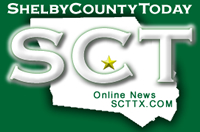November 17, 2025 - From the beginning of civilization man has devised different gestures to use when meeting or departing other people. It seems that the 21st century has had the most prolific imagination in this area
I am sure that you recall the old western movies starring the Cowboys and Indians. One can picture the Indian with his right hand raised above his head, palm out, saying “How”. I always wondered what the word meant in their language. Well, I found out that the word is a Dakota-Sioux word, “Hau”, which literally means “hello”. In that respect the old westerns were correct in their portrayal of the Indian greeting. With the right hand raised and palm facing out it showed the Indian was unarmed and peaceful.
The “handshake” dates far back in antiquity. In its oldest form it signified the handing over of power from a God to an earthly ruler. Around 1800 BC in Babylonia, the law required the king to grasp the hand of a statue-God once a year to renew his authority for another year.
The gesture of shaking hands became popular for a couple of reasons. One, it indicated to the other party that he did not have a weapon in his hand. The hand is open and not a fist. A clenched fist would indicate a desire to attack. Second, it was common for one to hide a dagger up the sleeve. So the shake would probably dislodge a knife and cause it to fall to the ground. This worked well unless one of the parties was left handed. So it seems that a left handed person had a distinct advantage. Women were not expected to shake hands as it was assumed they were not armed. It seems that women were not warriors until the twentieth century.
Several years ago a revised form of the handshake was developed. It is called the “high five” greeting. We have all seen mostly young people high-fiving everyone they meet. From that has evolved the hip bump, the rump bump and other oddities of gestures as a greeting.
In very recent years yet another gesture for greeting is the “fist bump”. It seems most all of the young folk today prefer the fist bump over the handshake or high five. In fact I saw our new president give his wife a “fist bump” on stage during a campaign event. The new fist bump is so popular today that a number of other variations have arisen from it. I will name only a few of the more popular ones: Air Knucks, Corna Combination, Pound Loose, Ice Cream, Jelly Fish, Mickey Mouse, Moose, Explosion, Tie Fighter, Stick Shift, Snail, and the Beached Whale. All of these are basically the fist bump with different uses of the fingers. Each one is then given an exotic name.
All of these are gestures of greeting someone. Basically gestures come in three categories.
FRIENDLY GESTURES: A-ok, Air Kiss, Cheek Kissing, Hat Tip, Elbow Bump, Eskimo Kissing, Fist Bump, High Five, and Thumbs Up.
FORMAL GESTURES: Bowing, Curtsey, Hand Kissing, Hand Shaking, and Kowtow.
GENERAL GESTURES: Crossed Fingers, Finger Gun, Hand Rubbing, Head Bobble, Raised Fist, Shrug, Sign of the Cross, Victory Sign, and Head Nod.
Of all the greeting gestures mentioned above, my favorite will always be the old fashioned hand shake. Besides showing the other party that you are unarmed, and friendly, a tight, hardy hand shake indicates a confident and robust personality. A ‘dead fish’ hand shake indicates the opposite. My father-in-law was positive that a man’s handshake gave a very good first impression. I agree with him. In a way the fist bump and high five also give off a first impression, perhaps not a very good one.
I recommend that we all keep on waving our hand at folk and stay with the old faithful handshake. In today’s society it is recommended that you wash your hands with anti-bacterial sanitizer after a handshake, just to be on the safe side.









